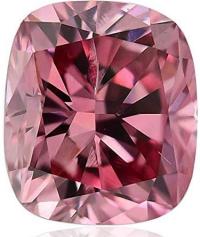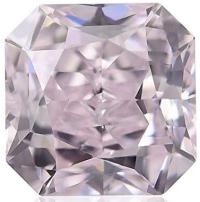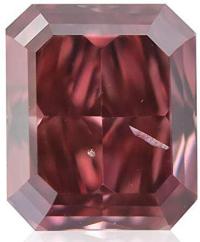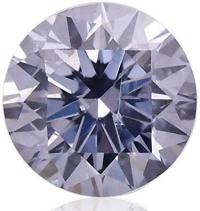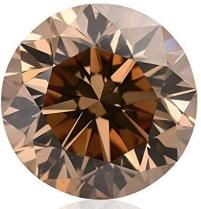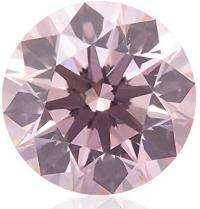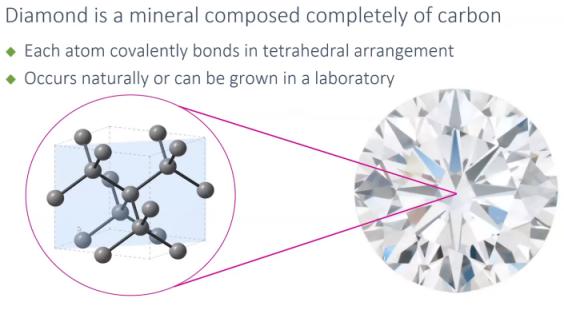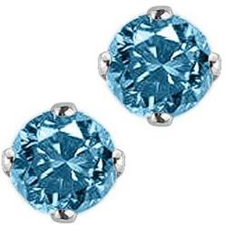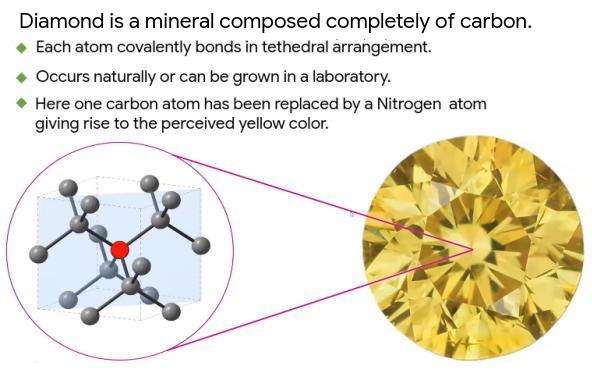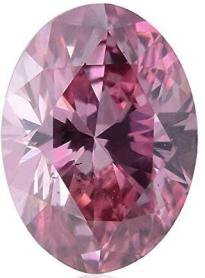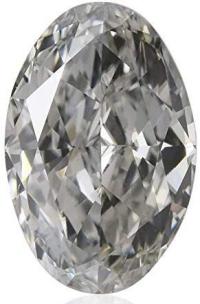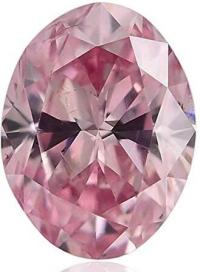Natural fancy colored diamonds are the ‘Rembrandts’ of the diamond industry.
Colored diamonds are not what you normally visualize when you think about diamonds. What your mind’s eye rather sees is a crystal clear diamond with no perceivable color. Such clear colorless stones are still predominant in the jewelry trade. However, diamonds do come in many different colors. These gorgeous stones exist in Brown (also called Champagne), Yellow, Black, Green, Blue, Pink, Red, Violet and Orange colors.
Click On The Images
Diamonds with a detectable natural hue, are known as natural color diamonds. If the color is strong enough, the diamond is referred to as a natural fancy colored diamond.
So Where does color come from?
Phenomenal geological conditions create natural color diamonds. Defects in the crystalline lattice as well as trace impurities impregnated in the crystal structure impart the beautiful colors. Minute quantities of trace elements interact with carbon atoms bringing about the natural color in these spellbinding gemstones.
In the past few years, colored diamonds have taken the jewelry market by storm with pink, blue & yellow fancy stones being greatly sought after by those who are able to afford these rare & luxurious substitutes to white.
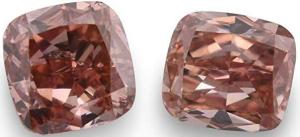
|
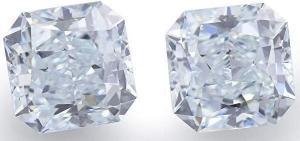
|
|
| 1.33 Carat Fancy Intense Orangy Pink Loose Diamond Natural Color Pair | 1.55 Carat Light Blue Loose Diamond Natural Color Radiant Cut |
Click On The Images
Their rarity & beauty makes these gemstones worth well into the millions. The high scarcity and skyrocketing demand for colored diamonds is making them not just a girl’s best friend but an investor’s too.
In the last twenty years or so, rare fancy color diamonds have seen upto thirty-fold increase in value. The appreciation is mainly fuelled by the need of investors to find alternative avenues of investment to secure their wealth and to protect inheritance for the next generation.
Click On The Images
How does a diamond become colored?
The development of natural color diamonds is a process that needs not only the original magical recipe for diamond creation, namely that of unimaginable heat & pressure placed on carbon crystals, but also the presence of additional trace elements as well.
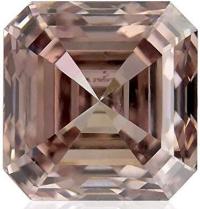
|
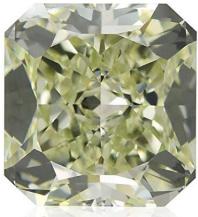
|
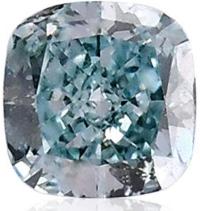
|
||
| 0.50Cts Fancy Pink Brown Loose Diamond Natural Color Asscher Shape | 1.26 Carat Fancy Yellowish Green Loose Diamond Natural Color | 0.26Cts Fancy Intense Blue Green Loose Diamond Natural Color |
Click On The Images
A diamond is a crystallized isotope of carbon. It develops in the high pressure & high temperature conditions existing at extreme depths of 140 kms to 190 kms within the Earth’s Mantle. Carbon or carbon containing minerals provide the seed carbon source. The miraculous metamorphosis of carbon into a diamond crystal happens over a period of hundreds of millions of years.
Purer the carbon seed and the more perfect the crystalline lattice structure, clearer and more colorless is the resulting diamond. However, the conditions in which a diamond develops are far removed from the ideal and sanitized conditions of a laboratory.
Tetrahedral Structure of Pure Carbon White Diamond
At times the crystalline structure of the diamond gets distorted by the immense pressure at those depths. At other times, the seed carbons source gets impregnated with impurities like nitrogen, boron or hydrogen and many a times both the above factors occur together.
Occasionally, a diamond can also get exposed to a source of radioactivity during its formative years. Mostly, such radiation comes in the form of alpha and beta particles emitted by underground uranium compounds or by seeping groundwater.
Round Brilliant Cut Blue Diamond Earring Studs
Click On The Image
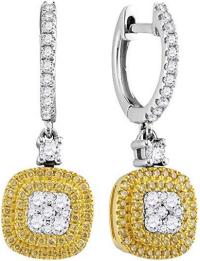
|

|
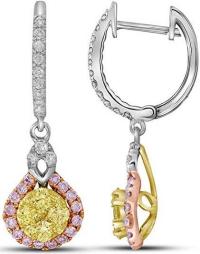
|
||
| Yellow Diamond Cluster Dangle Earrings 3/4ct 18k White Gold | Yellow Diamond Cluster Earrings 1-1/2ct 18k White Gold | Yellow Diamond Dangle Earrings 1.00ct 14k White Gold |
Click On The Images
Depending on the type of impurity or crystalline distortion or exposure to radioactivity, the resulting diamond absorbs certain spectrum of light and reflects others. We perceive the color of the diamond based on the reflected spectrum of light.
Though all natural fancy colored diamonds are rare wonders of nature, there are differences in degree of rarity among the colors. Natural fancy Red diamonds, together with natural fancy Pink, Blue, Pure Orange, Green and Violet are among the rarest of natural fancy colored diamonds. Yellow and brown diamonds are comparatively more common. Percentages of colored diamonds of pure hues seen by Gemological Institute of America during the last one decade are as follows:
| Yellow | 53.5% |
| Green | 1.6% |
| Blue | 1.0% |
| Red | 0.06% |
| Orange | 0.03% |
From the above table, we see that orange diamonds are the rarest among this elite group. Yellows are relatively common.
The most common color-causing factor in fancy colored diamonds is the occurrence of trace elements within the chemical composition of a diamond. As a case in point, Nitrogen impurities impart a yellow tinge. We all know that nitrogen is among the most plentiful constituent of our environment. The air we breathe is seventy percent nitrogen. And sure enough, a vast majority of diamonds show yellowy shades.
Tetrahedral Structure of a Yellow Diamond With Nitrogen Impurity
Under different conditions, Boron contamination causes the diamond to look blue. Such blue diamonds (gray-blue, grayish blue, blackish blue or black-blue colored diamonds) are inconceivably rare and supremely valuable.
Violet diamonds owe their color to presence of hydrogen in their crystalline lattice structure. They can display deep violet hues with gray or silver modifying colors. Natural fancy violet diamonds with a Violet hue are incredibly rare in nature.
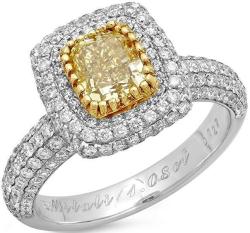
|
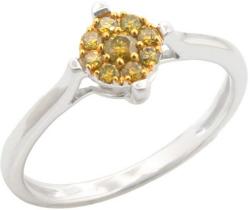
|
|
| 14k Gold 2.35CTW Diamond Ring, (VS1-VS2/G-H/Fancy Yellow) | Round Brilliant Cut Yellow Color Diamond Cluster Ring |
Click On The Images
Since natural fancy violet diamonds are virtually non-existent, there has been a considerable debate as to whether these gemstones actually exist or not. However, it is a fact that natural fancy violet diamonds do exist and are separate from natural fancy Purple diamonds.
It is thought that the intense pressure beneath the Earth’s surface causes a non-reversible change in the crystal lattice of the diamond causing it to absorb certain spectrum of light and producing color. The tremendous pressure exerted on the diamond deep in the earth abnormally compresses & distorts its crystalline structure, thus creating a purple, brown, red or pink diamond.
A shower of natural radiation during the process of creation of a diamond can impact its color. Green diamond hues are a result of such natural radiation in the earth.
MODIFIERS
Almost all colored diamonds exhibit multiple spectral hues. The predominant color is mingled with modifiers, one or more additional colors that factor in the overall impression. The combination of modifying colors contributing to a colored diamond’s final appearance also contributes to the final per carat price of a gem.
Natural colored diamonds are graded for color in a different way than white diamonds. They are graded in the following order: faint, very light, light, fancy light, fancy, fancy dark, fancy intense, fancy deep, and fancy vivid. With most natural colored diamonds, the more desirable stones are the ones closer to fancy vivid.
Colored diamonds can range from under $2,000 per carat for some orangy brown diamonds to more than $22,000 per carat for fancy pink brown diamonds, amply demonstrating the effect of modifying colors on the final value of colored diamonds.
Click On The Images
Fancy colored diamonds fall into a whole other category from white diamonds. Usually, shoppers looking for fancy colored diamonds have different needs than those looking for white diamonds.
“If gems are the flowers of the mineral kingdom, fancy color diamonds are the orchids” (R. J. Huay, 1817).
These poignant words, written by French mineralogist R.J. Huay, perfectly express the appeal of colored diamonds as exotic and rare beauties of nature. Diamonds come in the largest variety of colors of any known natural gemstone. The two most famous diamonds in the world are colored diamonds. The Tiffany Diamond is a magnificent Fancy Yellow, 128.54 carat diamond and the Hope Diamond is a stunning blue, weighing 45.52 carats.
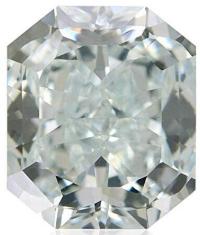
|
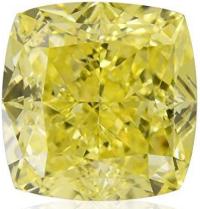
|

|
||
| 0.73Cts Fancy Light Bluish Green Loose Diamond Natural Color | 1.04 Carat Fancy Intense Yellow Loose Diamond Natural Color Cushion Cut | 0.53 Carat Chameleon Loose Diamond Natural Color |
Click On The Images
Colored diamonds are very much in vogue these days. The rage for these stones was triggered by celebrities sporting them on the Red Carpet. Moreover, when A-list figures, like Jennifer Lopez & Victoria Beckham received pink diamond engagement & eternity rings, curiosities were bound to be fueled. And where the celebrities go, high fashion follows.
Or Learn About More Colored Diamonds As Follows:
See Also:
Fascinating Facts About Diamonds Straight From Tiffany & Co’s Chief Gemologist
